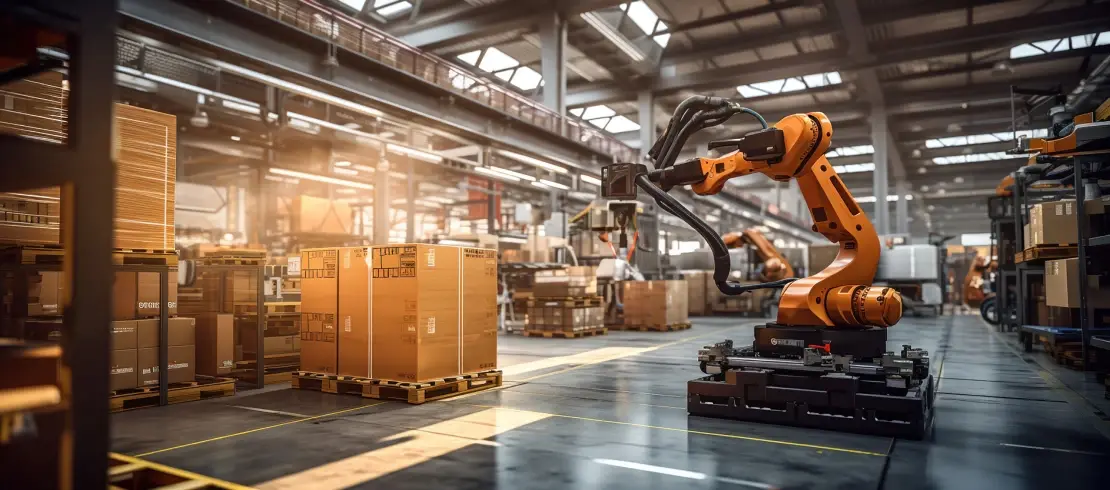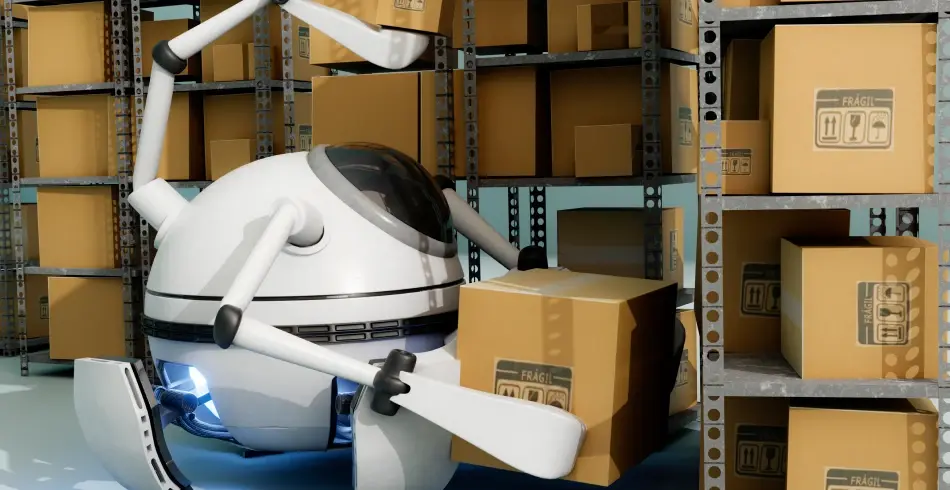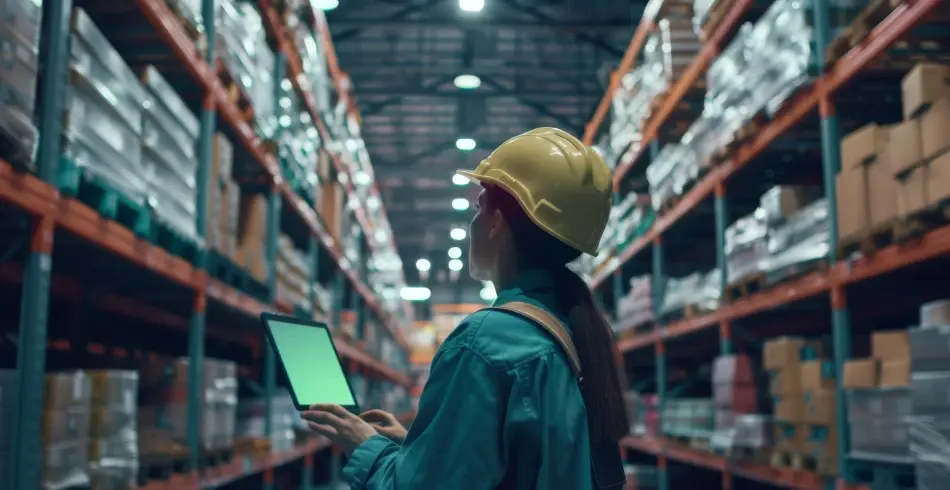Modern Warehouse Automation Trends for 2024

One of the primary drivers behind the adoption of automation in modern warehousing is the growing demand for faster order fulfilment. With the rise of e-commerce and the increasing expectations of consumers for quick delivery, warehouses are under pressure to process orders at lightning speed. But even beyond the realm of quick commerce, warehouses are witnessing a significant shift driven by the demand for enhanced operational efficiency, streamlined processes, high precision, and improved customer experiences. Automation technologies play a pivotal role in empowering warehouses to navigate this transformation by accelerating order fulfilment, optimising resource utilisation, and adapting to the demands of an increasingly interconnected global market.
According to recent data, the adoption of warehouse automation is on the rise, with a significant increase in the number of companies leasing spaces in modern industrial and logistics parks and investing in automated solutions. In fact, reports speculate that the global warehouse automation market is expected to reach USD 44 billion by 2028, at a CAGR of 15% between 2023 and 2028.
Trends in Modern Warehouse Automation
AGVs, AMRs, and Collaborative Robots: Automated Guided Vehicles (AGVs) and Autonomous Mobile Robots (AMRs) are leading the charge in disrupting material handling processes within modern warehouses.
AGVs are equipped with advanced navigational technology like laser or magnetic guidance systems, which autonomously traverse predefined paths to undertake tasks such as material transport and pallet movement with minimal to no manual intervention.
Similarly, AMRs use sophisticated sensors and navigation algorithms to navigate dynamic warehouse environments without the constraints of fixed pathways. This makes them ideal for order fulfilment and inventory replenishment in large-scale facilities.
Collaborative robots, or ‘cobots’, represent another pivotal advancement in modern warehouse automation for seamless human-robot collaboration. These versatile robots work alongside human workers, offering support in various warehouse tasks. For instance, humanoid cobots with advanced gripping mechanisms assist in handling delicate or irregularly shaped items in the assembly line, offering operational flexibility and efficiency. Additionally, cobots integrated with machine learning algorithms can autonomously perform repetitive tasks after learning from human demonstrations, enabling human workers to focus on higher-value activities.
ASRS for Advanced Storage and Retrieval: Automated Storage and Retrieval Systems (ASRS) offer benefits such as improved space utilisation, enhanced inventory management, and reduced retrieval times.
These systems use automated machinery such as vertical lift modules, shuttle systems, and robotic arms to store and retrieve goods from designated storage locations within a warehouse. They leverage advanced software algorithms to optimise storage density and organise inventory based on demand patterns, to ensure efficient space utilisation and minimising the need for manual intervention.
Additionally, ASRS streamline order fulfilment processes by automating the retrieval of goods, reducing picking times and enhancing overall warehouse productivity. These are especially useful for sectors that deal with perishable products that need utmost supervision. For example, in pharmaceutical warehouses, the ASRS can dynamically organise inventory based on demand patterns and expiration dates, ensuring that products are efficiently rotated to minimise waste and maintain regulatory compliance.

AI and ML for Driving Predictive Analytics and Optimisation: Artificial Intelligence (AI) and Machine Learning (ML) technologies are key to collect and process data for predictive analytics, demand forecasting, and inventory optimisation.
For example, in a retail distribution centre, accurately predicting customer demand and optimising inventory levels are critical for ensuring seamless order fulfilment and customer satisfaction. AI-powered algorithms continuously analyse vast amounts of historical sales data, customer purchasing patterns, and market trends to forecast future demand with precision. Based on previous sales patterns and seasonal variations, the AI algorithm can also predict an upcoming surge in demand for a particular product category.
ML algorithms further complement these AI predictions by dynamically adjusting inventory levels and reorder points to minimise stockouts and overstock situations. Such as analysing real-time sales data and adjusting inventory replenishment schedules in a retail warehouse to ensure that popular items are always available for purchase while minimising excess inventory holding costs.
Over that, AI-driven predictive maintenance algorithms can also monitor the health of modern warehouse equipment and machinery in real-time. By analysing sensor data and performance metrics, these algorithms can accurately predict potential equipment failures before they occur, allowing maintenance teams to proactively address issues and minimise downtime.
IoT for Real-Time Data Insights and Enhanced Inventory Management: IoT devices such as sensors, RFID tags, and barcode scanners collect data on inventory movements, environmental conditions, and equipment performance, providing warehouse managers with valuable insights into operational efficiency and inventory accuracy.
Consider a large-scale distribution centre for example. With RFID tags affixed to individual product packages, warehouse managers can precisely track their location as they move through the facility. Meanwhile, temperature and humidity sensors monitor environmental conditions to ensure optimal storage conditions are maintained for temperature-sensitive goods.
The real-time data collected by IoT devices is transmitted to a central management system, providing managers of modern warehouses with instant visibility into inventory levels, storage conditions, and equipment health.

Blockchain: Enhancing Transparency and Security: Blockchain technology is revolutionising supply chain management by enhancing transparency, traceability, and security. By creating an immutable ledger of transactions, blockchain ensures transparency and accountability across the entire supply chain, from raw material sourcing to product delivery. Smart contracts embedded within blockchain transactions automate and enforce contractual agreements, streamlining procurement, payment, and logistics processes. Additionally, blockchain-based digital identities and product tracking systems enable end-to-end traceability, reducing the risk of counterfeit products, unauthorised modifications, and supply chain fraud.
A good use case is the food industry, where ensuring the safety and authenticity of products throughout the supply chain is of paramount importance. Here is a scenario where a consumer purchases a package of organic strawberries from their local supermarket. Each package is equipped with a unique QR code that consumers can scan using their smartphones, which corresponds to a blockchain-based digital identity assigned to the batch of strawberries. As the strawberries make their journey from the farm to the supermarket shelves, each step of the supply chain is recorded as a transaction on the blockchain ledger as timestamps in real-time.
At the point of sale, when the consumer scans the QR code on the package of strawberries, they can access a wealth of information about the product’s journey. They can view details such as the date and location of harvest, information about the farm where the strawberries were grown, details about the transportation and storage conditions, and even the names of the individuals involved in each step of the supply chain. Additionally, with smart contracts, when the distributor receives the shipment of strawberries, it triggers the release of payment to the farmer. This release is contingent upon the successful delivery of the goods and adherence to quality standards.
Cloud-Based Solutions for Scalability and Cost-Efficiency: By leveraging cloud computing resources, modern warehouses can easily scale their operations to accommodate fluctuating demand, seasonal peaks, and business expansion. Cloud-based software solutions provide real-time visibility into inventory levels, order status, and warehouse performance, enabling efficient resource allocation and decision-making.
Moreover, cloud-based platforms offer cost-effective subscription-based pricing models, eliminating the need for large upfront investments in hardware and software infrastructure.
Advanced Fleet Management for Optimising Logistics Efficiency : Advanced Fleet Management systems play a crucial role in optimising transportation operations, which in turn impact warehouse efficiency. By leveraging GPS technology, telematics devices, and route optimisation algorithms, these systems streamline transportation processes, reduce fuel consumption, and minimise delivery times.
For instance, real-time vehicle tracking and monitoring systems provide fleet managers with up-to-the-minute data on the location and status of each vehicle. This information can be integrated into warehouse operations to improve scheduling for inbound and outbound shipments. By analysing real-time data, warehouse managers can adjust docking schedules based on the estimated arrival times of incoming shipments, ensuring efficient use of warehouse space and resources.
Moreover, predictive maintenance algorithms integrated into the fleet management system allow for proactive maintenance scheduling based on factors such as mileage and historical performance data. This proactive approach helps prevent unexpected vehicle breakdowns, ensuring smooth transportation operations and minimising disruptions to warehouse activities.
Looking Ahead…
Companies across industries are poised to significantly increase their investments in warehouse automation. With projections indicating that automation will account for a quarter of capital spending on average over the next five years, the logistics and fulfilment sector is expected to lead the charge. By allocating more than a third of its capital spending to automation initiatives, this sector aims to achieve unprecedented levels of operational excellence and competitiveness. These investments underscore the growing recognition of automation as a strategic imperative in warehouse management.
In line with this, modern industrial logistics parks play a pivotal role in facilitating the automation of warehouses. These state-of-the-art facilities are designed to accommodate advanced automation technologies, providing the infrastructure and support necessary for seamless integration. From robotics and AI-powered systems to automated storage and retrieval solutions, Grade A industrial logistics parks offer the ideal environment for companies to implement and scale up their automation initiatives. As a result, businesses can leverage these parks as strategic hubs for driving efficiency, agility, and innovation in warehouse management, thereby staying ahead in today’s dynamic marketplace.